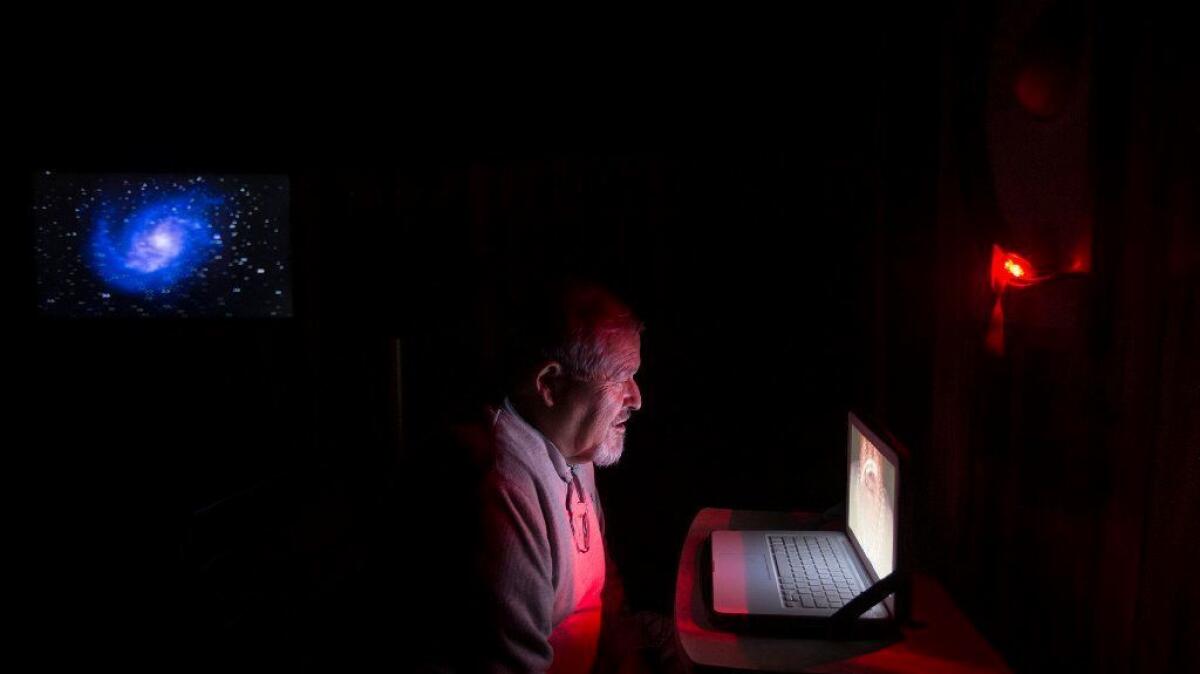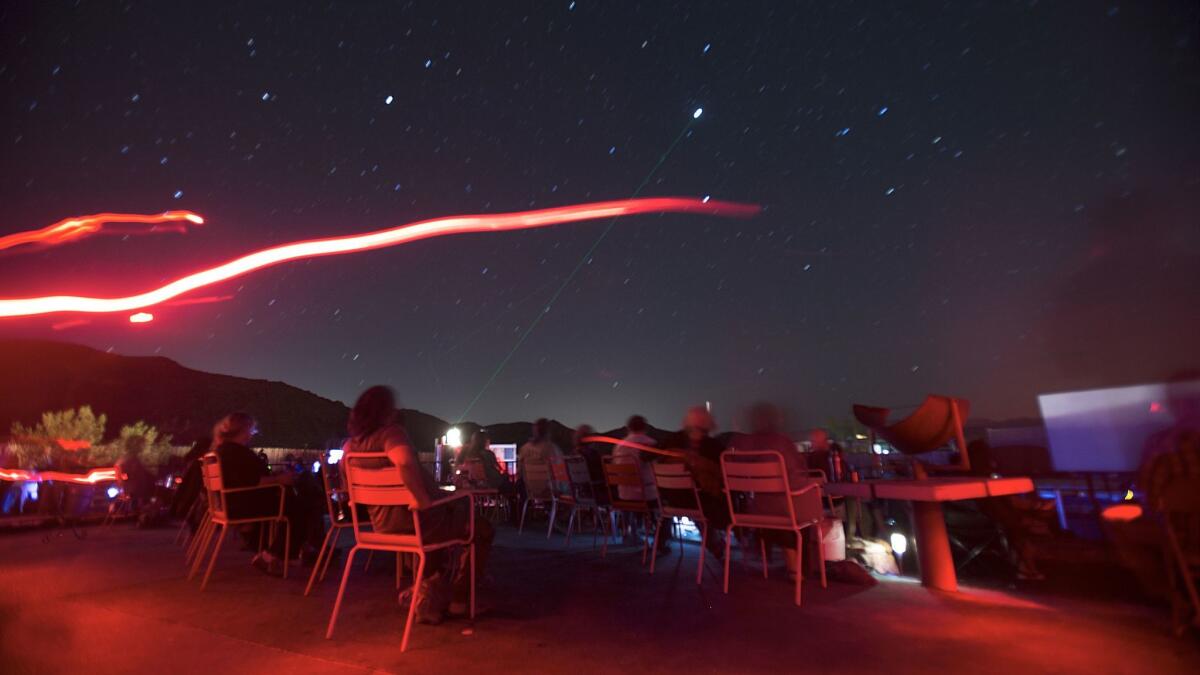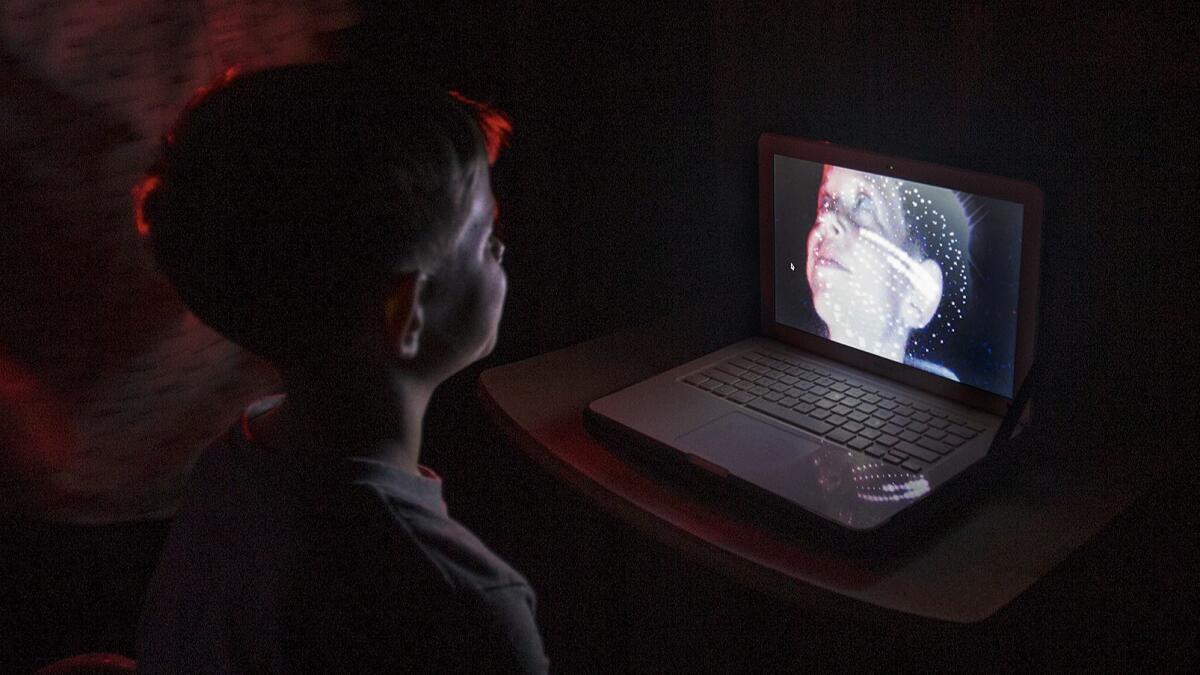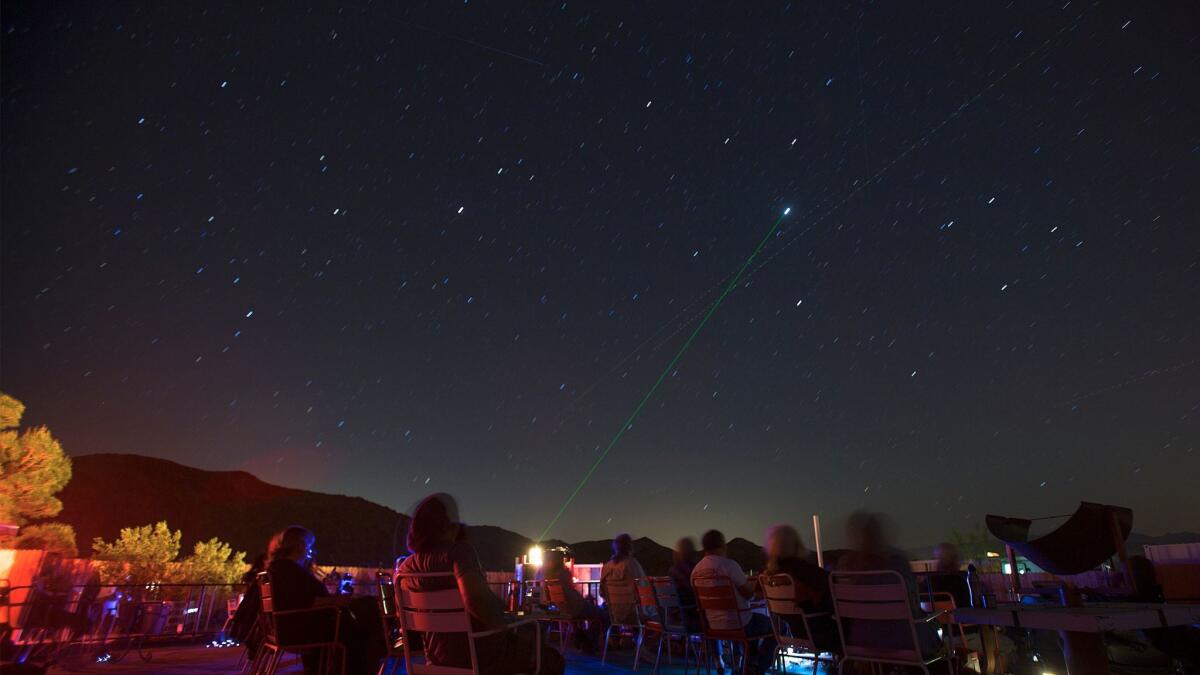Will sending selfies to Jupiter’s moon, Europa, get the attention of an E.T.?

Reporting from JOSHUA TREE — Emcee Tom O’Key seemed giddy as dozens of guests filed into an outdoor theater in this Mojave Desert town Saturday night to learn about an icy moon of Jupiter and take a stab at connecting with whatever — or whomever — may be living there.
“We’re sending selfies to Europa here tonight, folks,” O’Key told those who had gathered in the Joshua Tree Astronomy Arts Theater. “Take a moment to reach out to the cosmos and say, ‘We here on Earth care.’ ”
Sponsored by the Southern California Desert Video Astronomers, the public program featured a documentary, 3-D holographic projections, views through telescopes and what was believed to be the first opportunity to send video selfies to a moon of Jupiter that NASA scientists have identified as one of the likeliest homes of extraterrestrial life in our solar system.
We don’t know if aliens are friendly. ... Will they be cute and cuddly like ... E.T., or will they be like the Kardashians?
— Seth Shostak, senior astronomer at the Search for Extraterrestrial Intelligence Institute

Zerrin Leckey, 9, was among the first to take a few deep breaths, smile, then speak into the lens of a video camera connected to a device that converts audio and visual images into flashes of laser aimed at the moon — only 37 minutes away at light speed.
“Hi, Europa!” he said. “This is Zerrin on Earth. I’m turning 10.”
Next up was Jean Mueller, 67, a retired telescope operator at the Palomar Observatory who has discovered more than 30 comets.
“I photographed everything in the sky except you, Europa,” she said. “Now, I’m talking to you in person, and that’s pretty nice.”
The casual tone of these pioneering attempts at intragalactic communication was fine with O’Key, who didn’t hesitate to note the limits of the technology in the astronomy club’s “Europa is Alive!” event or “the giggle factor involved in all this.”
It was O’Key, 63, a retired technical consultant in personal injury litigation cases, and Leonard Holmberg, 62, a retired developer of optics-based products, who put together the selfie-sender: “An instrument comprised of a video camera, a laptop computer, fiber optics technology and a yellow laser that cost us about $400,” O’Key said.
“We like to think we’re bringing extraterrestrial adventure to everyday people,” he said.
“Of course, we’d need the power of the sun to generate a coherent beam strong enough to hit Europa,” Holmberg said. “But at least some of the photons in the transmissions we’re sending are reaching their target. No doubt about it.”
Hi, Europa! This is Zerrin on Earth. I’m turning 10.
— Zerrin Leckey, age 9

The project, Homberg said, suggests how far technology has advanced since charismatic physicist Carl Sagan popularized the possibility of making contact with extraterrestrial life.
Sagan led a team that developed communications materials that were aboard the Voyager 1 and 2 space probes launched in 1977 to make drive-by visits to planets in this solar system and then continue on to explore space. The packages included images of a nude man and woman and musical samplings, including Chuck Berry’s “Johnny B. Goode.”
O’Key and Holmberg consider themselves “Saganites,” inspired by NASA’s recent announcement that Europa and Saturn’s moon, Enceladus, harbor all the ingredients needed for life to evolve: heat, organic material and vast oceans of water capped by ice.
“What they’re doing is fine with me,” Seth Shostak, senior astronomer at the nonprofit Search for Extraterrestrial Intelligence Institute based in Mountain View, Calif., said. “But it’s fair to say we don’t know if aliens are friendly, or if they even exist. If they do, will they be cute and cuddly like the one in the movie ‘E.T.,’ or will they be like the Kardashians?”
“In that case,” he continued, “we should keep a low-profile. You don’t want your tombstone to read: I’m responsible for the obliteration of the human race.”
Jim Bell, an astronomer at Arizona State University and president of the Pasadena-based Planetary Society, described the Joshua Tree effort as “delightful.”

“It’s a testament,” Bell said, “to the ability of every man nowadays to have access to technology that was only a dream a decade ago.”
Scientists have been searching the skies for signs of alien civilizations for decades, mostly with efforts based on the premise that they, like us, would use bursts of radio and laser light we might be able to hear or see.
The SETI Institute runs an array of radio telescopes designed to act as an enormous ear capable of scanning more than a million stars over 10 billion radio frequencies. It still has not detected any signal produced by someone else out there.
The Mars lander Phoenix, launched in 2007, carried recorded greetings. A year later, NASA beamed the Beatles’ “Across the Universe” at the North Star, Polaris.
In 2012, a now defunct company leased a huge radio telescope in Carmel Valley, Calif., and offered to transmit personal messages and photos from Earth to various stars for free.
Now, there’s the astronomy club led by O’Key, who as a boy liked to shine a flashlight beam at the Earth’s moon knowing it would get there in 1.2 seconds.
“The only exceptional thing about our attempt to communicate with an alien world,” he said, “is how easy and inexpensive it has become to give it a try.”

ALSO
After 13 years at Saturn, NASA’s Cassini spacecraft is ready for its grand finale
Scientists get a rare view of a type Ia supernova magnified 50 times
A rocky ‘super-Earth’ with the potential for liquid water is found 39 light-years away
More to Read
Sign up for Essential California
The most important California stories and recommendations in your inbox every morning.
You may occasionally receive promotional content from the Los Angeles Times.











